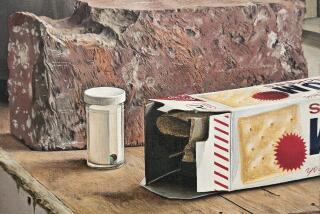STROKES OF GENIUS
- Share via
William Wilson writes in his article about Van Gogh: “You can see madness trying to swallow the artist at Arles in his weird ‘Night Cafe’ and the frantic brush-work and whirl-pool space of many another picture,” fueling the myth of the artist’s “madness” (“The $40-Million Obscenity,” April 5).
Would Wilson so categorically see madness in Van Gogh’s brush-strokes if the painter’s unstable mental condition had not been so clearly documented? Can Wilson diagnose the mental state of other lesser known artists by their brush strokes?
We know now that Van Gogh suffered from a form of epilepsy, but there is no reason to assume that “The Night Cafe” or any of his pictures was conceived, even in part, as a result of medical or psychological abnormalities. Like other epileptics, Van Gogh worked between fits and the results show that these periods were of absolute intellectual lucidity.
Throughout his artistic life Van Gogh wrote to his brother Theo eloquent letters, carefully explaining what he meant to achieve and how he meant to achieve it. These letters taken together with a careful examination of the pictures completed at Arles and then at Saint-Remy and Auvers, give testimony to a profoundly analytic artist of uncommon sensitivity, whose brush strokes--as well as all his other choices--were not determined by impending madness, but made consciously by a man at the height of his powers, the complete master of himself and his art.
DONALD RUBIN
Topanga
More to Read
The biggest entertainment stories
Get our big stories about Hollywood, film, television, music, arts, culture and more right in your inbox as soon as they publish.
You may occasionally receive promotional content from the Los Angeles Times.










